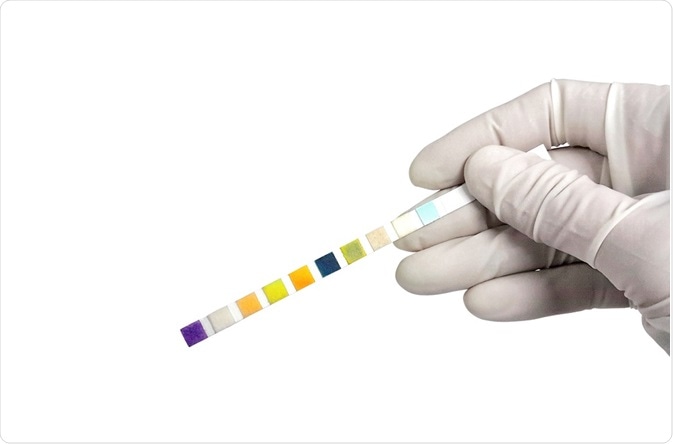Paper-based Analytical Devices Overview

The formation of microfluidic assays on paper provides the potential for portable medical tests that can be used anywhere in the world.
 Credit: Chamaiporn Naprom/Shutterstock.com
Credit: Chamaiporn Naprom/Shutterstock.com
Paper is a hydrophilic material meaning that its affinity with water allows solutions to flow through the porous structure. This simple capillary action does not require added mechanical constructions for pumping.
Bioassays can now detect the presence and amount of biomolecules in small fluid volume arrays of less than a picoliter, but require expensively manufactured lab equipment.
Paper-based analytical devices are being utilized as biosensors and immunoassays for detecting biological analytes associated with disease. The technology is also being employed for testing contaminated food in order to reduce rates of infections caused by foodborne pathogens.
Paper-based analytical devices for clinical diagnosis in resource restricted countries
There is a need for portable diagnostic equipment which does not require a laboratory in countries with a limited health infrastructure and resource restrictions. Paper is a suitable material for fabricating this type of analytical device because it is lightweight, widely available and affordable. Moreover, studies have found paper to be biocompatible with some biological molecules.
Paper-based microfluidic devices (µPAD) have been formed which allow multiple bioassays to be conducted simultaneously. The µPAD requires only a droplet of sample to identify a range of analytes, including proteins, pathogens and chemical contaminants.
The design is based on the formation of a hydrophobic barrier on a paper platform. The hydrophilic-hydrophobic barriers produce channels to confine sample solutions with the restricted fluid travelling through the channel via capillary forces.
Hydrophobic barriers on paper can be fabricated through simple procedures such as wax printing and photolithography. Detection occurs because of the biochemical reaction that takes place between sample and analyte. Paper-based immunoassays have already been produced to detect influenza viruses and the Hepatitis C virus, both rising global healthcare problems.
Paper-based analytical devices for biosensing technology
An early paper bioanalytical device was formed through a simple paper-based dipstick assay and is commonly used to detect glucose in urine. Glucose detection is important for the monitoring of conditions such as diabetes and the detection of diseases such as islet cell carcinoma.
Paper-based analytical devices for biosensing analytes such as glucose provide the advantage of portability and reduced sample consumption. The most common paper-based glucose sensors provide a color indication that glucose is present in a sample. The color change is generated by the catalytic reaction of glucose from glucose oxidase which produces hydrogen peroxide. The hydrogen peroxide then reacts with the color indicator to form the visual color change.
A three-dimensional paper-based microfluidic device for detecting glucose has also been developed by stacking alternating layers of patterned paper and holed adhesive tape. This structure has the advantage of providing a color change throughout the paper device as fluid can move freely in both vertical and horizontal directions.
Paper-based analytical devices for the detection of foodborne pathogens
Foodborne pathogens, such as E. coli and Salmonella species, are a major public health threat with many cases caused by contaminated food leading to severe illness. Current detection methods are based on either culture techniques which necessitates 5-7 days to complete or polymerase chain reaction requiring specialist laboratory equipment and trained personnel.
The ability to detect foodborne pathogens with a device fabricated from paper would supply quick contamination identification and a reduction in the number of infections. A paper-based microfluidic device in the form of a microspot assay has been formed by wax printing on filter paper.
Detection is indicated by a color change, produced by the reaction between a pathogen specific enzyme and a chromogenic substrate. The methodology is capable of detecting pathogens within 12 hours or less in food samples that contain small concentrations of bacteria.
Sources:
- Sher, M. et al. 2017. Paper-based analytical devices for clinical diagnosis: recent advances in the fabrication techniques and sensing mechanisms, Expert Review of Molecular Diagnostics, 17, pp. 351-366.
- Lam, T. et al. 2017. A Chemically Patterned Microfluidic Paper-based Analytical Device (C-µPAD) for Point-of-Care Diagnostics, Scientific Reports, 7, e1188.
- Liu, S. et al. 2016. A Review on Microfluidic Paper-Based Analytical Devices for Glucose Detection, Sensors, 16, pp.
- Jokerst, J.C. et al. 2012. Development of a Paper-Based Analytical Device for Colorimetric Detection of Select Foodborne Pathogens, Analytical Chemistry, 84, pp. 2900-2907.
Further Reading
- All Chromatography Content
- Chromatography Overview
- Gas Chromatography-Mass Spectrometry (GC-MS) Applications
- High Performance Liquid Chromatography (HPLC)
- Liquid Chromatography-Mass Spectrometry (LC-MS) Applications
Last Updated: Feb 26, 2019

Written by
Shelley Farrar Stoakes
Shelley has a Master's degree in Human Evolution from the University of Liverpool and is currently working on her Ph.D, researching comparative primate and human skeletal anatomy. She is passionate about science communication with a particular focus on reporting the latest science news and discoveries to a broad audience. Outside of her research and science writing, Shelley enjoys reading, discovering new bands in her home city and going on long dog walks.
Source: Read Full Article